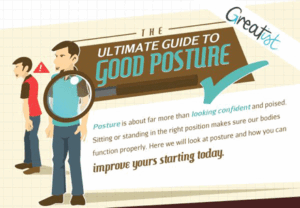5 Myths about Massage
Recently, I went in for my annual(ish) physical. While discussing my health history with my doctor, she asked if I was receiving massages regularly since that is my line of work. I of course told her that I do receive regular bodywork. Her response almost made my blood pressure spike and my heart to stop.
She said, “That’s great. Getting a regular massage is great to flush out all the toxins and it can even help reduce cellulite.”
Umm, really Doc? And did she just make a fat joke or does my cellulite look smooth?
I said, “Did you read that in a scientific journal? Massage doesn’t flush out toxins or remove cellulite any more than pointing your hair dryer out the window will make it warm outside. Perhaps you should encourage your patients to get regular massage because it has been shown to help lower blood pressure or perhaps that massage has been shown to be helpful in recovering from training and reducing pain, the number one reason, even more than the common cold, why people come to see you.
She said, “Oh, I did hear that! It helps remove lactic acid from the body if you need to recover from a work out.”
[Forehead slap-OY!]
I went on to explain to her that is actually not true at all. Research, from almost 20 years ago, shows that blood lactate levels return to normal ranges within 20-60 minutes regardless of any interventions. Lactic acid is not even a waste product, but rather metabolic fuel for the muscle. Ironically, studies have shown that massage may actually interfere with the removal of lactic acid. Perhaps you meant the research that shows that massage aids in recovery is speaking to the evidence that shows it reduces soreness and swelling in athletes post-exercise, and significantly reduces pain in people experiencing DOMS (delayed onset muscle soreness), which is not lactic acid, by as much as 25-50 percent. Increases in blood and lymph flow may enhance removal of pain substrates that start to accumulate in the injured area, reducing edema. They still need to do more research on what is actually occurring at the cellular levels to know for certain WHY it is helping, but we do know that it is.
Back to the examination…
This left me with two very troublesome thoughts. The first was how can we change the dialogue about massage therapy publicly if the professionals, not only doctors, but massage therapists, physical therapists, etc., who we are told to trust don’t even understand 20 year old research, and number two, should I have waited until after the rectal exam to call her out like that?
Here are just a few myths that I would like to dispel so that we can all start to share accurate information, preferably at more appropriate times.
#1. Toxins can be flushed out of the body via Massage:
This is an interesting myth as it’s probably the most popular. The body processes excess waste (by-products of food, drink, air born pollutants etc.) in a variety of ways i.e. sweat, urine, feces, or if you’re ill by vomiting. Your liver, kidneys and skin do a remarkable job of getting rid of these ‘toxins’ on a daily basis. Massage does, however, increase blood supply to various parts of the body and can regenerate a lack-luster circulation as well as stimulating the lymphatic system. This may be what is actually being referred to. Drinking water is a pleasant thing to do after a massage, but not in any way a means of flushing out the toxins.
#2. Massage will get rid of cellulite:
If massage therapists could really banish cellulite, we would have a line down Boylston Street and we’d never see a dimpled thigh ever again. However, cellulite is persistent subcutaneous fat and it’s appearance, mainly in women, is determined by hormonal factors, genetics, diet and lifestyle. Eating a healthy, low fat diet, rich in fruits, vegetables and fiber and taking regular exercise is the best option to prevent and reduce the appearance of cellulite.
#3. The sign of a really good massage is that you feel quite sore the day after
Everyone is different and some people are more sensitive than others but just because you don’t feel sore the next day doesn’t mean you had a bad massage. The sign of a good massage is that you ‘feel better’ than you did before – it may take a while to feel the full benefits but you should experience some of the following:
- Relaxation
- Renewed energy
- Increased mobility
- Less pain
- Better sleep
- Alertness
#4. You shouldn’t get a massage if you have cancer
Massage Therapists and cancer patients have often fallen prey to this myth. Until recently, it was thought that the action of massage could actively spread cancer cells throughout the body. However, cancer cells are caused by the body’s immune system malfunctioning and cells that turn cancerous will do so regardless of massage therapy stimulus. If massage did cause cancer cells to move through the body then the same could be said of any form of exercise.
#5. You shouldn’t have a massage if you’re pregnant
Massage Therapy does not induce an early labor and is perfectly safe for both mother and baby during normal pregnancies. It can be extremely beneficial for the Mom-to-be and offer a way to relax and unwind during a physically and mentally tiring time. Massage is also a great way to keep the muscles ready for the big day. Post-natal massage can be equally beneficial too.
Obviously, if you are receiving this newsletter, then you already believe in the benefits of massage. I hope you will share these common myths with your friends and family and help to eliminate some confusion about massage. If you want to learn more about what a massage actually can provide you, I encourage you to Click Here (http://www.massagetherapy.com/_content/images/Media/Factsheet1.pdf)
Ready to #feelbetter?
You're just a click away from a wicked good massage!
-

60 Minute Massage Gift Card
$170.00 Add to cart -

90 Minute Massage Gift Card
$255.00 Add to cart -

Mini Aer Small Room Air Purifier
$149.00 Add to cart -
Sale!

Thera-Pearl Sports Pack/Hot Cold
Original price was: $14.99.$12.99Current price is: $12.99. Add to cart -

3 Somadome Sessions Gift Card
$135.00 Add to cart -

TheraBand CLX Connective Loop
$14.99 Select options -

6 Somadome Sessions Gift Card
$270.00 Add to cart -
Sale!

Biofreeze
Original price was: $14.99.$12.99Current price is: $12.99. Add to cart
Passion Mountain
I was at an event recently and was asked by somebody how I could STILL be so passionate for what I do. He said, “What I mean is that you talk about what you do with the passion of child flipping through a new pack of baseball cards. I wish I was that passionate about…
Read MoreFish You Should Scale Back On
New Englander’s love their seafood and we deepen our love affair every summer when our favorite crustaceans, ‘lobstah’ is a plentiful. But what is the best seafood for us and what are the ones that we should be staying away from regardless of how yummy they may be? Monterey Bay Aquarium has combined data from…
Read MoreSports are a Great Metaphor
It’s no secret that my life has always revolved around athletics. From my early days playing pop warner football, through my college years of lacrosse and on into the various community leagues since, being part of a team has always been where I feel most comfortable. What I enjoy most about being part of a…
Read MoreWhat is an Expert?
“An expert is someone widely recognized as a reliable source of technique or skill whose faculty for judging or deciding rightly, justly, or wisely is accorded authority and status by their peers or the public in a specific well-distinguished domain.” – Wikipedia This past month I flew to Atlanta to present a few classes in…
Read MoreThe Power of a Hug
Originally Posted 5/1/2014; following the 1 year anniversary of the Boston Marathon Bombings and our mission to rebound after these horrible attacks on our city. We helped orchestrate the ‘One Run for Boston’; a 3328.2 NON-STOP running relay from LA to Boston, raising over $500K for the victims and survivors of the events of 4/20/2013.…
Read MoreTips from the Table
Without fail, every marathon season, I am asked by my patients, what kind of advice I would offer up to them as they prepare to run the Boston marathon. I first admit that I have never (nor will ever) run a marathon, but given my unique insight of spending 1000’s of hours alone in a…
Read MoreShoulder Impingement
The glenohumeral joint is a highly complex articulation. It has the greatest range of motion of any joint in the body. However, its increased motion occurs at the expense of stability, requiring the soft tissues to play a more critical role in maintaining joint integrity. As a result of increased mechanical demands, numerous soft-tissue injuries…
Read MoreTrain, train, train. Train of fools.
In my seventeen years as a massage therapist, I am still amazed by some of the things I see in my office. Being situated 1/10th of a mile from the finish line of one of the most prestigious marathons in the world, the Boston Marathon, we see more than our fair share of runners coming…
Read MoreAchilles Tendon Disorder
Achilles Tendon Disorder Massage therapists see many clients with active lifestyles. Running, jumping, dancing, climbing, or any number of other activities can put serious stress on the Achilles tendon (AT). AT disorders also can contribute to biomechanical disorders in the foot and lower extremity. That is why it is important for the massage practitioner to…
Read More


